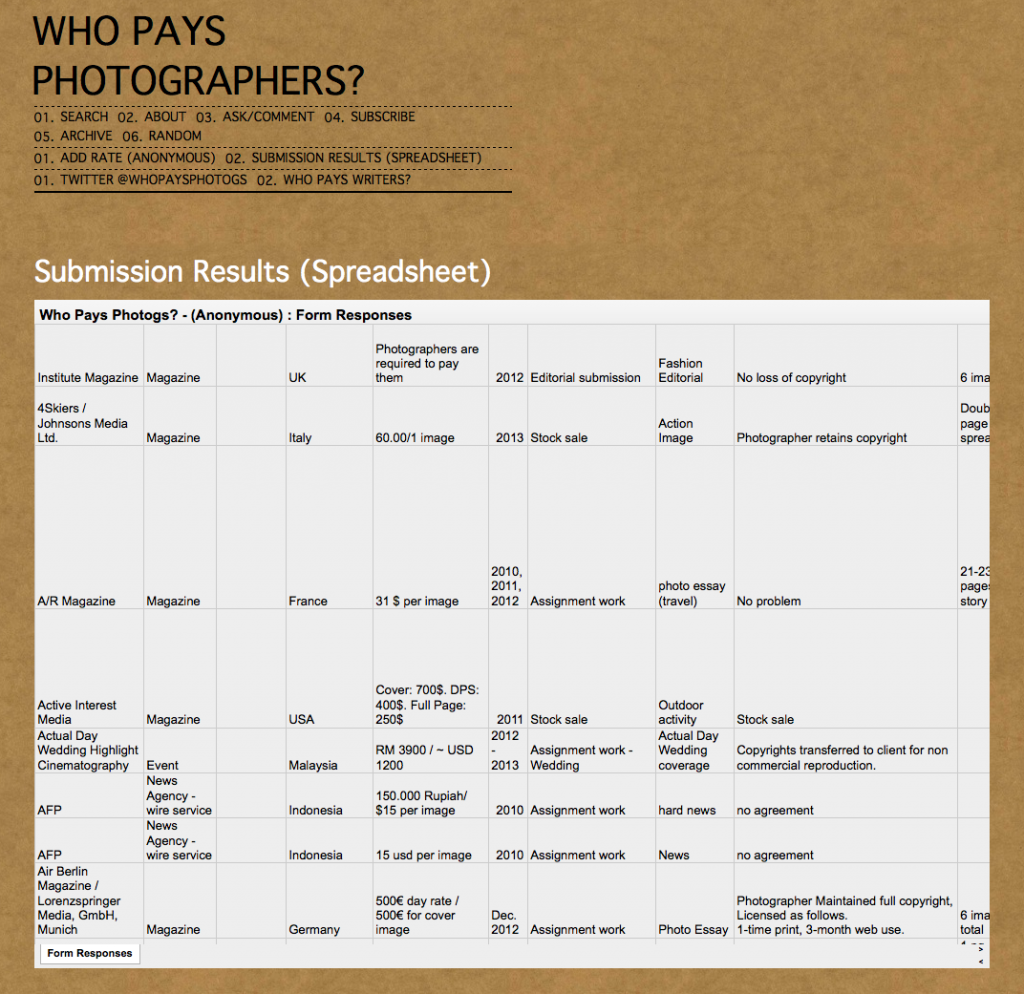Archive for the ‘About fotoLibra’ Category
fotoLibra Smashes International Drug Ring
December 17th, 2015Well, that might be pushing it a bit, but I’ve always wanted to write a headline like that.
We take care to vet every image uploaded to fotoLibra. The first hurdle of course is quality; images must have a minimum pixel dimension of 1750 and a resolution of 300 ppi. (PPI and DPI deniers — I know your arguments, but the majority of fotoLibra sales are for print use and they need to be 300 dpi). If you read this blog about PPI/DPI you’ll see that one of the reasons we demand 300 ppi is to prevent porn being uploaded.
We hadn’t thought of drugs.
Someone I’ll call Eugene had. He appears to be from the Ukraine, but that’s easy to mask. What he did was very simple and (I’m reluctant to say it) quite clever. He simply uploaded photographs of drugs to fotoLibra and offered them for sale. In the Image Description field he wrote “Ve vant to build strong lasting relationship mit customers like you” and followed it with a Skype contact.
Ingenious. Had the images remained on fotoLibra they would very quickly have been picked up by search engines (all our keywords are indexed so search engines can crawl and find them easily) and anyone searching for, say, Hygetropin on the web would have been able to find it nicely displayed on the squeaky clean fotoLibra site together with handy details of how to purchase it.
We spotted the images within an hour of upload. Not much discussion was needed. We simply deleted them.
Yvonne (and if you’ve had dealings with Yvonne, you’ll know she makes Jacqui Norman look like a pussycat) wrote to our hopeful new member:
Hello Eugene
fotoLibra is a professional picture library selling image usage rights to publishers, advertising agencies and so on. We are not a shop window for online drugs’ salesmen; we have therefore removed the images from your portfolio and cancelled your membership.
Regards,
Yvonne Seeley
Curses! Foiled again!
A London council buys an image from fotoLibra
November 20th, 2015by Gwyn Headley
Managing Director
fotoLibra promises to pay our contributors within 30 days of receipt of payment. But there’s a big difference between selling a picture and getting paid for it.
On June 17 last year a London council got in touch to say that they were looking to purchase an image from us. They asked us to please fill in an attached Supplier Form so they could set us up on their finance system.
We filled in the form and sent it back to them the same day.
On April 24 this year the council got back in touch, saying “We are finally ready to purchase an image for our new museum. As soon as we have your quote I will raise the purchase order.”
We confirmed the price quote the same day.
On April 29 the council wrote “We’re having a few finance issues but hopefully we’ll get them sorted soon and send you a purchase order.”
The purchase order arrived on May 8 and the image was immediately supplied to them.
We invoiced the council on May 18. They got in touch to say the invoice had been forwarded to the accounts department “who can take up to 30 days to make payment.”
On July 21 — 57 days later — we chased them for payment. “Sorry for the delay, I’ve chased it up for you,” was the reply.
On August 27 we chased them again.
There was no reply till September 2, when we were told “Finance are claiming it is not their fault, but a problem with the finance software. So I am chasing the people who run the software. Sorry for the late payment.”
The same day our purchaser got in touch again to say “Apparently I need to raise a new purchase order as the last one was incorrect. There’s no need for you to create a new invoice.”
Again on September 5 she wrote “The new purchase order should be approved on Monday. No need to invoice again.”
On September 22 we sent a copy of our statement to the payments address.
On September 30 we wrote to them saying: “We still haven’t seen any payment. Please give us a contact in your finance department.”
Immediate auto response: “I no longer work for ***** Council. Please resend email to blah blah blah.” The email was resent.
5 October: We sent a statement of overdue account.
No reply.
On October 20 a physical letter was posted to the Finance Department quoting both purchase orders, the invoice number, a copy invoice and description of the work.
No reaction.
On November 3 at 13:20 we contacted the Finance Department and the Purchasing Department to ask why we had received no reply to our emails or letter. “Unless we receive payment of £*** within 15 days we will initiate court proceedings against you,” we suggested.
A reply came from the purchasing department at 15:43. ” Very sorry, please accept our apologies. We are unable to forward your invoice to our Finance Department as they can only process invoices they receive from you directly. Please forward your invoice to the Finance Department at this address” [giving us an address we’d never seen before].
So we sent the invoice to the new address quoting both purchase orders, the original and the new one.
BIG mistake.
On November 5 we had an email printed in red. “Invoice rejected for payment due to insufficient information. Purchase Order Number not present, not clear or invalid.”
We immediately sent a revised invoice quoting only the second Purchase Order Number.
They responded on November 16. “Due to the time relapse [sic] could I re-audit your bank account details. Can you provide details on letterhead signed by person in authority in PDF format. [no question marks]
This was sent 3 minutes later.
On November 17 they replied “I have audited your account and removed the payment hold. Your invoice should be selected in the next payment run. This should be tomorrow, so the payment should be with you by next Monday.”
That’s Monday November 23rd.
Our breath is bated.
Coded Out Of The Marketplace?
March 5th, 2015Don’t you just hate it when the phone rings with the number “WITHHELD” and a disembodied voice (which certainly hadn’t learned English at its mother’s knee) disinterestedly interrogates you about your most intimate personal details before deigning to reveal that all they wanted to talk about was the state of your massive overdraft, which is the last thing you want to discuss?
Well I do. And what makes it even more annoying is that the traffic is always only one way. You can’t call THEM and interrogate them.
Have you noticed that broadband download speed (i.e. people selling things to you) is ten times as fast as broadband upload speed (i.e. you trying to sell your images to people)?
You can’t write to Them, either. At least I can’t. I was being unjustly bullied by a bank so I wrote to them and explained the situation. Four times. My letters were ignored. So I wrote to the Big Kahuna who at least had the grace to respond, get the situation sorted and pay me a minuscule fee in compensation before being led away in handcuffs for perpetrating financial crimes immeasurable to man.
And what has this to do with fotoLibra? Well, this morning a City firm — not a behemoth, but a known name — wanted to buy an image from us.
Let’s call the buyer Rhiannon. She finds an image she likes for a project, then finds she has to register with fotoLibra in order to buy it. Offhand I can’t think of any website that allows you to buy without asking for some form of registration.
So Rhiannon dutifully fills in our simple form and submits it.
Nothing happens.
She tries to register again. Still nothing.
Eventually she rings us up. We explain that she has to click her verification email to prove that she is who she is.
“What verification email?” She never got her verification email.
She went away to find out why. And quickly came back with the reason. Rhiannon’s coders had blocked our verification email because they had never heard of fotoLibra.com. So our confirmatory message — which she had requested — was arbitrarily dumped.
So we had to sell the picture to Rhiannon manually.
Only emails from FTSE 100 companies, Amazon, Microsoft, and other megalithic businesses appear to be allowed through. What we have to say is clearly not of interest. What hope is there for the smaller company?
We are being coded out of the marketplace.
Hotmail and fotoLibra
August 7th, 2014This is getting beyond a joke.
Yesterday our web editor Jacqui Norman sent out a Picture Call to all our contributors. Nearly 50,000 photographers have signed up to fotoLibra since we started ten years ago. When people leave, we remove their names from our mailing list.
Yet Jacqui’s simple request for images to be purchased by a long-established and reputable British magazine, paying fair prices, has not reached 3,850 of our contributors because Hotmail has classed it as spam.
They are preventing us from communicating with members who have voluntarily signed up to fotoLibra’s services.
How can they do that?
They just can. Some Hotmail computer in Seattle noticed a small company in Britain was sending out 3,850 emails to Hotmail subscribers once a fortnight, and arbitrarily blocked it.
Nobeody read the emails. Nobody checked the content. Nobody asked the sender (that’s us) what on earth it thought it was doing, emailing nearly 4,000 Hotmail members. It just blocked us.
That’s harming its own subscribers more than it harms us, because it’s our Hotmail members who are deprived of submitting images to the Picture Call. People who use other email suppliers get to see the Picture Call, submit their images and will no doubt make sales.
But Hotmail subscribers won’t get that chance. That’s tough on them.
And exasperating for us.
Money For Photographs
August 1st, 2014by Gwyn Headley
Managing Director
Tags: Cape Town, fotoLibra, Greg Lumley, payments, photo, sales, Who Pays Photographers
Is it August already? Where does the time go? And where does the money go?
In a week where Greg Lumley, a South African photographer, made the news by offering a unique ultra-hi res print of his gorgeous photograph of Cape Town for $35,000, an influential photo magazine despondently commented that “Photography as a business is competing in a race to the bottom. Photographs are regularly devalued by people who steal them, agencies that sell them for a pittance, and photographers who are willing to work for free.”
It is very true that it’s a rough time to be in the picture sales business. Clients have lost interest in the quality of the image; their sole concern is price. National newspapers are a closed shop — management won’t allow picture desks to use anyone other than their contracted agency, unless the paper’s readers give them up for free, an acquisitions policy energetically pursued by the BBC among many others. And the agency’s photographers are up in arms because their images are being traded for pence.
Meanwhile photographers spend more and more on kit which makes their already great images even better, and still no one is buying. Tiny publishers who 20 years ago would come cap in hand for permission to buy from the lordly picture libraries now want to pay prices for RM images that you’d expect to see on a £50,000 a month contract. Mind you, they don’t get them; not from us at any rate. It’s like being bullied at school. Once they start picking on you, even the weediest gurly will fancy his chances chiz chiz.
Yesterday I came across this eye-opener of a website, Who Pays Photographers?
It’s a crowd-sourced spreadsheet of publishers around the world who pay — or don’t pay — for photography. It makes riveting, if clunky, reading. Everyone who’s ever sold a picture, or tried to, should have a look at this. And contribute, if you can.
The site owner writes: “[This is] a space to list how much — and how little — magazines, newspapers, websites, NGOs and corporations pay photographers. Editorial, commercial, advertising, entertainment — any and all presented. Listing based on anonymous submissions. This is intended as an exercise in sharing, rather than shaming — but feel free to warn your fellow photogs about deadbeats.”
The creator of this fascinating site prefers to remain anonymous, but gives credit for the idea to Manjula Martin, who devised the ‘Who Pays Writers?‘ website. I’d remain anonymous too if I came up with the bowel-tinged background colour of the site. Maybe it looks OK in Windows. It certainly doesn’t on a Mac.
I remember reading last year on several photographic forums that more than one American photographer was claiming recent $10,000 sales for book front cover image usage. But to a man they were too bashful to reveal the names of the books, the publishers, or even to show off their expensively purchased images.
Oddly, those sort of claims don’t appear on the Who Pays Photographers? site. But reports of offers of “picture credits” abound.
DON’T give your pictures away for a credit. You know what a credit is worth. As my friend Mike Shatzkin used to say, “That, and 10¢, will get you a subway token.” I’ll update him — “That, and £4.70, will buy you a tube ticket to travel the 260 metres between Covent Garden and Leicester Square.”
Shatzkin’s is pithier. Mine is scarier. But they’re both true.
So This Is What We’re For
January 8th, 2014by Gwyn Headley
Managing Director
We received a cheery sales enquiry this morning:
Good morning,
I work for the Social Security Administration (SSA) in the Dallas Region. The Dallas Region is comprised of Social Security offices in 5 states (New Mexico, Oklahoma, Texas, Louisiana and Arkansas). The Dallas Region is separated into 6 parts called Area’s [I think he means Areas]. One such Area has Social Security Offices in two states (Oklahoma and Arkansas).
We are creating a banner for the Area front page that would represent 2 states (Oklahoma and Arkansas) and we would like to use one of your pictures as part of the banner to represent the State of Arkansas. This front page would exist on a Secure intranet and would only be visible to Social Security employees. This Intranet is not accessible to the general public or anyone outside of the Social Security Administration and serves as an information portal for SSA employees.
Please consider allowing us to use your image shown. As a government entity we cannot pay for rights.
Yvonne was on it in a flash:
Hello Tony
Many thanks for your message and for your interest in one of our images. I’m sorry to read that as a government entity you can’t pay for rights because, as a stock agency, our business is selling usage rights for our many contributors.
I regret that I can see no reason why we should give you free rights to use one of our images and wish you luck in persuading someone else to give away their work for no reward.
Regards,
Yvonne Seeley
What a model of restraint. It’s fortunate she responded before I had a chance to vent my spleen, otherwise Anglo-American relationships could have been irreparably damaged.
This scenario is becoming increasingly common. I wrote about it in a blog last November, Give Us Your Work For Free. Yvonne was more concise and to the point than Whitey. Why should anybody, in any organisation, in any country, anywhere in the world, expect to be paid for what they do and yet expect you and me to hand over the fruits of our investment, creativity and labour for nothing? It’s contemptuous, patronising and demeaning.
Mind you, Yvonne has form where this sort of behaviour is concerned. Some years ago when she was working for BASF and Sir Peter Hall was Director of the National Theatre, Hall’s secretary rang up to order 10 reels of recording tape. Yvonne’s question was to be expected: “To whom shall I send the invoice?” In a flash Hall (as he was then) was on the phone, fulminating “Don’t you know who I am? I’ll have your job for this!” Yvonne answered evenly, “I don’t think so. Now do you want to buy these tapes or not?”
Collapse of stout party, as they say.
Only one good comes of this. It shows that a picture library set up in a remote corner of North-West Wales can be seen and used by a US government department.
The next step is to get them to pay $600 for our lavatory seat. Older readers will recall the reference.
The New fotoLibra Website
December 16th, 2013I’ve been on both sides of the desk at publicity meetings when the response to the question “What’s new?” is “We’ve got a new website!”
Hearts sink all round. The PR company’s, because no journalist has bought a New Website story since 1993, and also the client’s, because he can see this magnificent, radical, earth-shatteringly great new website isn’t cutting the mustard with the very people he’s paying to tell the world how wonderful he is.
Well — fotoLibra has a new website! This is Version 6.0, launched at noon today. It’s evolutionary rather than revolutionary, so old fotoLibra hands won’t be fazed by unfamiliar procedures — but explore a little further and you’ll find a wealth of new and useful features for both buyers and sellers.
For instance, you no longer have to sign in to check the price of an image.
It’s a ‘responsive’ site, which means it works equally well on smartphones, tablets, laptops and desktops.
It’s bigger, brighter and faster, using the latest HTML5 features, which means you’ll need to upgrade your browser to appreciate them fully. You can navigate through the site using left and right arrow keys. There’s a new drag and drop image uploader with thumbnail generation. Search results default to larger thumbnails. There’s a lot more.
Please take it for a test drive:
http://www.fotoLibra.com.
And we would love to hear what you think about it, whether it’s bad or good.
Being a small company, fotoLibra actually listens and responds to all its contributors, unlike some others we could think of. We’ll respond to your comments and queries, and if you have ideas for further features we could offer in the future, let us know. If we like them and can do them, we’ll incorporate them.
A note to our dinosaur friends — fotoLibra 6.0 won’t work on the no longer supported web browser Internet Explorer 7, and works (but looks slightly odd) on IE8. Please upgrade to IE11, or try using Safari, Firefox, Chrome or Opera.
We hope you enjoy using the new fotoLibra Version 6.0. We’ve put a lot of hard work and love into making it as intuitive and user-friendly as we can. Please comment!
Giving The Customer What He Wants
May 29th, 2012by Gwyn Headley
Managing Director
The customer doesn’t want a quarter-inch drill. He wants a quarter-inch hole.
The drill itself is merely his instrument of delivery, just as the cameras of fotoLibra photographers are theirs.
That’s the sort of insight that delights management consultants, and it does have a certain seductive logic. If you concentrate on what the customer actually wants, instead of dressing up your product to fulfill your own desires and aspirations, then the road to fortune and fame will be open to you.
That was the disruptive thinking that lay behind the concept of fotoLibra. We are neither photographers nor critics. Who were we to judge one photograph over another? It would be purely our personal taste. It would have no reference to what the market wanted.
Our solution? Let the market itself decide. In fact, we would go a step further — the market would detail what it wanted to buy, and we would tell our photographers through regular Picture Calls. How simple is that?
Then fotoLibra found itself in that awkward position between overbearing boss and nagging wife. All our photographers wanted to do was buy spiffy new lenses, and there we were hectoring them about the photographs they should be taking, not the ones they wanted to take.
Happily I hope we’ve matured a bit. We’re more relaxed about the choices our photographers make. And going back to our drill imagery, our picture buyers don’t care if the photograph has been taken with a Coastal Optics 60 mm f/4 UV-Vis-IR APO Macro or a pinhole camera, as long as it matches their imagination.
So in our regular Picture Calls we describe the “quarter-inch and other-sized cavities” our customers are looking for to our army of photographers, and with the tools at their disposal they go out and Drill Dem Holes.
And it works very well.
And because the burden of fortune and fame is not yet an intolerable weight on the shoulders of fotoLibra, we’d welcome a little more of both.





